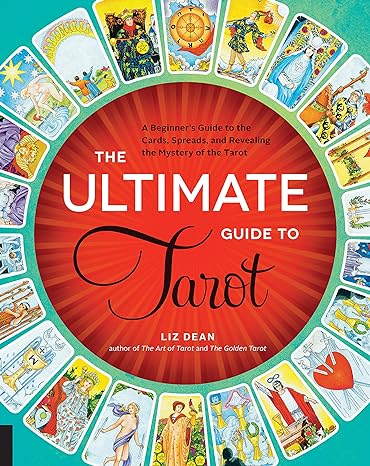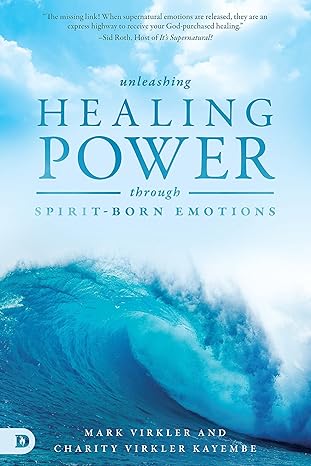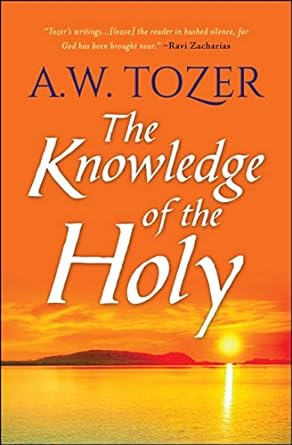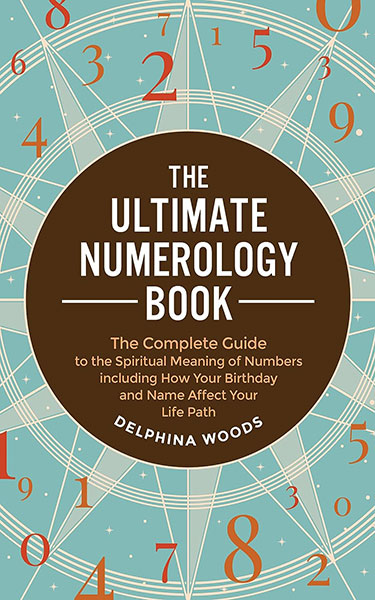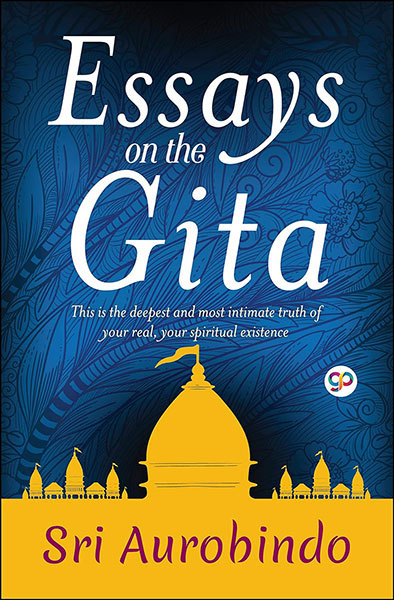
Essays on the Gita
First published in 1922, ‘Essays on the Gita,’ which is one of the most sacred Scriptures in the world written by Sri Aurobindo, an Indian philosopher, yoga guru, maharishi, poet, and Indian nationalist. He was also a journalist, editing newspapers such as Vande Mataram. This philosophical poem focuses on a conversation between the Pandava prince Arjuna and the Beloved Lord Krishna, an Avatar of the god Vishnu.
They converse about a variety of theological and philosophical issues regarding wisdom, devotion, self-knowledge, self-realization, ego, inner power, karma, and dharma. In this proficient study of the Bhagavad Gita, Sri Aurobindo defined the spiritual realization that not only liberated but transformed human nature, promoting a divine life on earth. The main purpose of his teachings was to boost the level of consciousness of people and to make people mindful of their true selves.
BEST DEALS
About the Author
Sri Aurobindo (born Aurobindo Ghose, 1872 " 1950) was an Indian philosopher, yoga guru, maharishi, poet, and Indian nationalist. He was also a newspaper journalist and editor of newspapers. He became an influential leader of the Indian movement for independence from British colonial rule before becoming a spiritual reformer and introducing his views of human progress and spiritual evolution.
At Pondicherry, Sri Aurobindo developed a spiritual practice he called Integral Yoga. His major literary works are The Life Divine, on philosophical aspect of Integral Yoga; Synthesis of Yoga, on principles and methods of Integral Yoga; and Savitri, an epic poem.
Read Sample
Chapter 1 : Our Demand and Need from the Gita
The world abounds with scriptures sacred and profane, with revelations and half-revelations, with religions and philosophies, sects and schools and systems. To these the many minds of a half-ripe knowledge or no knowledge at all attach themselves with exclusiveness and passion and will have it that this or the other book is alone the eternal Word of God and all others are either impostures or at best imperfectly inspired, that this or that philosophy is the last word of the reasoning intellect and other systems are either errors or saved only by such partial truth in them as links them to the one true philosophical cult. Even the discoveries of physical Science have been elevated into a creed and in its name religion and spirituality banned as ignorance and superstition, philosophy as frippery and moonshine. And to these bigoted exclusions and vain wranglings even the wise have often lent themselves, misled by some spirit of darkness that has mingled with their light and overshadowed it with some cloud of intellectual egoism or spiritual pride. Mankind seems now indeed inclined to grow a little modester and wiser; we no longer slay our fellows in the name of God’s truth or because they have minds differently trained or differently constituted from ours; we are less ready to curse and revile our neighbour because he is wicked or presumptuous enough to differ from us in opinion; we are ready even to admit that Truth is everywhere and cannot be our sole monopoly; we are beginning to look at other religions and philosophies for the truth and help they contain and no longer merely in order to damn them as false or criticise what we conceive to be their errors. But we are still apt to declare that our truth gives us the supreme knowledge which other religions or philosophies have missed or only imperfectly grasped so that they deal either with subsidiary and inferior aspects of the truth of things or can merely prepare less evolved minds for the heights to which we have arrived. And we are still prone to force upon ourselves or others the whole sacred mass of the book or gospel we admire, insisting that all shall be accepted as eternally valid truth and no iota or underline or diaeresis denied its part of the plenary inspiration.
It may therefore be useful in approaching an ancient Scripture, such as the Veda, Upanishads or Gita, to indicate precisely the spirit in which we approach it and what exactly we think we may derive from it that is of value to humanity and its future. First of all, there is undoubtedly a Truth one and eternal which we are seeking, from which all other truth derives, by the light of which all other truth finds its right place, explanation and relation to the scheme of knowledge. But precisely for that reason it cannot be shut up in a single trenchant formula, it is not likely to be found in its entirety or in all its bearings in any single philosophy or scripture or uttered altogether and forever by any one teacher, thinker, prophet or Avatar. Nor has it been wholly found by us if our view of it necessitates the intolerant exclusion of the truth underlying other systems; for when we reject passionately, we mean simply that we cannot appreciate and explain. Secondly, this Truth, though it is one and eternal, expresses itself in Time and through the mind of man; therefore every Scripture must necessarily contain two elements, one temporary, perishable, belonging to the ideas of the period and country in which it was produced, the other eternal and imperishable and applicable in all ages and countries. Moreover, in the statement of the Truth the actual form given to it, the system and arrangement, the metaphysical and intellectual mould, the precise expression used must be largely subject to the mutations of Time and cease to have the same force; for the human intellect modifies itself always; continually dividing and putting together it is obliged to shift its divisions continually and to rearrange its syntheses; it is always leaving old expression and symbol for new or, if it uses the old, it so changes its connotation or at least its exact content and association that we can never be quite sure of understanding an ancient book of this kind precisely in the sense and spirit it bore to its contemporaries. What is of entirely permanent value is that which besides being universal has been experienced, lived and seen with a higher than the intellectual vision.
I hold it therefore of small importance to extract from the Gita its exact metaphysical connotation as it was understood by the men of the time,—even if that were accurately possible. That it is not possible, is shown by the divergence of the original commentaries which have been and are still being written upon it; for they all agree in each disagreeing with all the others, each finds in the Gita its own system of metaphysics and trend of religious thought. Nor will even the most painstaking and disinterested scholarship and the most luminous theories of the historical development of Indian philosophy save us from inevitable error. But what we can do with profit is to seek in the Gita for the actual living truths it contains, apart from their metaphysical form, to extract from it what can help us or the world at large and to put it in the most natural and vital form and expression we can find that will be suitable to the mentality and helpful to the spiritual needs of our present-day humanity. No doubt in this attempt we may mix a good deal of error born of our own individuality and of the ideas in which we live, as did greater men before us, but if we steep ourselves in the spirit of this great Scripture and, above all, if we have tried to live in that spirit, we may be sure of finding in it as much real truth as we are capable of receiving as well as the spiritual influence and actual help that, personally, we were intended to derive from it. And that is after all what Scriptures were written to give; the rest is academical disputation or theological dogma. Only those Scriptures, religions, philosophies which can be thus constantly renewed, relived, their stuff of permanent truth constantly reshaped and developed in the inner thought and spiritual experience of a developing humanity, continue to be of living importance to mankind. The rest remain as monuments of the past, but have no actual force or vital impulse for the future.
In the Gita there is very little that is merely local or temporal and its spirit is so large, profound and universal that even this little can easily be universalised without the sense of the teaching suffering any diminution or violation; rather by giving an ampler scope to it than belonged to the country and epoch, the teaching gains in depth, truth and power. Often indeed the Gita itself suggests the wider scope that can in this way be given to an idea in itself local or limited. Thus it dwells on the ancient Indian system and idea of sacrifice as an interchange between gods and men,—a system and idea which have long been practically obsolete in India itself and are no longer real to the general human mind; but we find here a sense so entirely subtle, figurative and symbolic given to the word “sacrifice” and the conception of the gods is so little local or mythological, so entirely cosmic and philosophical that we can easily accept both as expressive of a practical fact of psychology and general law of Nature and so apply them to the modern conceptions of interchange between life and life and of ethical sacrifice and self-giving as to widen and deepen these and cast over them a more spiritual aspect and the light of a profounder and more far-reaching Truth. Equally the idea of action according to the Shastra, the fourfold order of society, the allusion to the relative position of the four orders or the comparative spiritual disabilities of Shudras and women seem at first sight local and temporal, and, if they are too much pressed in their literal sense, narrow so much at least of the teaching, deprive it of its universality and spiritual depth and limit its validity for mankind at large. But if we look behind to the spirit and sense and not at the local name and temporal institution, we see that here too the sense is deep and true and the spirit philosophical, spiritual and universal. By Shastra we perceive that the Gita means the law imposed on itself by humanity as a substitute for the purely egoistic action of the natural unregenerate man and a control on his tendency to seek in the satisfaction of his desire the standard and aim of his life. We see too that the fourfold order of society is merely the concrete form of a spiritual truth which is itself independent of the form; it rests on the conception of right works as a rightly ordered expression of the nature of the individual being through whom the work is done, that nature assigning him his line and scope in life according to his inborn quality and his self-expressive function. Since this is the spirit in which the Gita advances its most local and particular instances, we are justified in pursuing always the same principle and looking always for the deeper general truth which is sure to underlie whatever seems at first sight merely local and of the time. For we shall find always that the deeper truth and principle is implied in the grain of the thought even when it is not expressly stated in its language.
Nor shall we deal in any other spirit with the element of philosophical dogma or religious creed which either enters into the Gita or hangs about it owing to its use of the philosophical terms and religious symbols current at the time. When the Gita speaks of Sankhya and Yoga, we shall not discuss beyond the limits of what is just essential for our statement, the relations of the Sankhya of the Gita with its one Purusha and strong Vedantic colouring to the non-theistic or “atheistic” Sankhya that has come down to us bringing with it its scheme of many Purushas and one Prakriti, nor of the Yoga of the Gita, many-sided, subtle, rich and flexible to the theistic doctrine and the fixed, scientific, rigorously defined and graded system of the Yoga of Patanjali. In the Gita the Sankhya and Yoga are evidently only two convergent parts of the same Vedantic truth or rather two concurrent ways of approaching its realisation, the one philosophical, intellectual, analytic, the other intuitional, devotional, practical, ethical, synthetic, reaching knowledge through experience. The Gita recognises no real difference in their teachings. Still less need we discuss the theories which regard the Gita as the fruit of some particular religious system or tradition. Its teaching is universal whatever may have been its origins.
The philosophical system of the Gita, its arrangement of truth, is not that part of its teaching which is the most vital, profound, eternally durable; but most of the material of which the system is composed, the principal ideas suggestive and penetrating which are woven into its complex harmony, are eternally valuable and valid; for they are not merely the luminous ideas or striking speculations of a philosophic intellect, but rather enduring truths of spiritual experience, verifiable facts of our highest psychological possibilities which no attempt to read deeply the mystery of existence can afford to neglect. Whatever the system may be, it is not, as the commentators strive to make it, framed or intended to support any exclusive school of philosophical thought or to put forward predominantly the claims of any one form of Yoga. The language of the Gita, the structure of thought, the combination and balancing of ideas belong neither to the temper of a sectarian teacher nor to the spirit of a rigorous analytical dialectics cutting off one angle of the truth to exclude all the others; but rather there is a wide, undulating, encircling movement of ideas which is the manifestation of a vast synthetic mind and a rich synthetic experience. This is one of those great syntheses in which Indian spirituality has been as rich as in its creation of the more intensive, exclusive movements of knowledge and religious realisation that follow out with an absolute concentration one clue, one path to its extreme issues. It does not cleave asunder, but reconciles and unifies.
The thought of the Gita is not pure Monism although it sees in one unchanging, pure, eternal Self the foundation of all cosmic existence, nor Mayavada although it speaks of the Maya of the three modes of Prakriti omnipresent in the created world; nor is it qualified Monism although it places in the One his eternal supreme Prakriti manifested in the form of the Jiva and lays most stress on dwelling in God rather than dissolution as the supreme state of spiritual consciousness; nor is it Sankhya although it explains the created world by the double principle of Purusha and Prakriti; nor is it Vaishnava Theism although it presents to us Krishna, who is the Avatara of Vishnu according to the Puranas, as the supreme Deity and allows no essential difference nor any actual superiority of the status of the indefinable relationless Brahman over that of this Lord of beings who is the Master of the universe and the Friend of all creatures. Like the earlier spiritual synthesis of the Upanishads this later synthesis at once spiritual and intellectual avoids naturally every such rigid determination as would injure its universal comprehensiveness. Its aim is precisely the opposite to that of the polemist commentators who found this Scripture established as one of the three highest Vedantic authorities and attempted to turn it into a weapon of offence and defence against other schools and systems. The Gita is not a weapon for dialectical warfare; it is a gate opening on the whole world of spiritual truth and experience and the view it gives us embraces all the provinces of that supreme region. It maps out, but it does not cut up or build walls or hedges to confine our vision.
There have been other syntheses in the long history of Indian thought. We start with the Vedic synthesis of the psychological being of man in its highest flights and widest rangings of divine knowledge, power, joy, life and glory with the cosmic existence of the gods, pursued behind the symbols of the material universe into those superior planes which are hidden from the physical sense and the material mentality. The crown of this synthesis was in the experience of the Vedic Rishis something divine, transcendent and blissful in whose unity the increasing soul of man and the eternal divine fullness of the cosmic godheads meet perfectly and fulfil themselves. The Upanishads take up this crowning experience of the earlier seers and make it their starting-point for a high and profound synthesis of spiritual knowledge; they draw together into a great harmony all that had been seen and experienced by the inspired and liberated knowers of the Eternal throughout a great and fruitful period of spiritual seeking. The Gita starts from this Vedantic synthesis and upon the basis of its essential ideas builds another harmony of the three great means and powers, Love, Knowledge and Works, through which the soul of man can directly approach and cast itself into the Eternal. There is yet another, the Tantric, which though less subtle and spiritually profound, is even more bold and forceful than the synthesis of the Gita,—for it seizes even upon the obstacles to the spiritual life and compels them to become the means for a richer spiritual conquest and enables us to embrace the whole of Life in our divine scope as the Lila of the Divine; and in some directions it is more immediately rich and fruitful, for it brings forward into the foreground along with divine knowledge, divine works and an enriched devotion of divine Love, the secrets also of the Hatha and Raja Yogas, the use of the body and of mental askesis for the opening up of the divine life on all its planes, to which the Gita gives only a passing and perfunctory attention. Moreover it grasps at that idea of the divine perfectibility of man, possessed by the Vedic Rishis but thrown into the background by the intermediate ages, which is destined to fill so large a place in any future synthesis of human thought, experience and aspiration.
We of the coming day stand at the head of a new age of development which must lead to such a new and larger synthesis. We are not called upon to be orthodox Vedantins of any of the three schools or Tantrics or to adhere to one of the theistic religions of the past or to entrench ourselves within the four corners of the teaching of the Gita. That would be to limit ourselves and to attempt to create our spiritual life out of the being, knowledge and nature of others, of the men of the past, instead of building it out of our own being and potentialities. We do not belong to the past dawns, but to the noons of the future. A mass of new material is flowing into us; we have not only to assimilate the influences of the great theistic religions of India and of the world and a recovered sense of the meaning of Buddhism, but to take full account of the potent though limited revelations of modern knowledge and seeking; and, beyond that, the remote and dateless past which seemed to be dead is returning upon us with an effulgence of many luminous secrets long lost to the consciousness of mankind but now breaking out again from behind the veil. All this points to a new, a very rich, a very vast synthesis; a fresh and widely embracing harmonisation of our gains is both an intellectual and a spiritual necessity of the future. But just as the past syntheses have taken those which preceded them for their starting-point, so also must that of the future, to be on firm ground, proceed from what the great bodies of realised spiritual thought and experience in the past have given. Among them the Gita takes a most important place.
Our object, then, in studying the Gita will not be a scholastic or academical scrutiny of its thought, nor to place its philosophy in the history of metaphysical speculation, nor shall we deal with it in the manner of the analytical dialectician. We approach it for help and light and our aim must be to distinguish its essential and living message, that in it on which humanity has to seize for its perfection and its highest spiritual welfare.
Chapter 2 : The Divine Teacher
The peculiarity of the Gita among the great religious books of the world is that it does not stand apart as a work by itself, the fruit of the spiritual life of a creative personality like Christ, Mahomed or Buddha or of an epoch of pure spiritual searching like the Veda and Upanishads, but is given as an episode in an epic history of nations and their wars and men and their deeds and arises out of a critical moment in the soul of one of its leading personages face to face with the crowning action of his life, a work terrible, violent and sanguinary, at the point when he must either recoil from it altogether or carry it through to its inexorable completion. It matters little whether or not, as modern criticism supposes, the Gita is a later composition inserted into the mass of the Mahabharata by its author in order to invest its teaching with the authority and popularity of the great national epic. There seem to me to be strong grounds against this supposition for which, besides, the evidence, extrinsic or internal, is in the last degree scanty and insufficient. But even if it be sound, there remains the fact that the author has not only taken pains to interweave his work inextricably into the vast web of the larger poem, but is careful again and again to remind us of the situation from which the teaching has arisen; he returns to it prominently, not only at the end, but in the middle of his profoundest philosophical disquisitions. We must accept the insistence of the author and give its full importance to this recurrent preoccupation of the Teacher and the disciple. The teaching of the Gita must therefore be regarded not merely in the light of a general spiritual philosophy or ethical doctrine, but as bearing upon a practical crisis in the application of ethics and spirituality to human life. For what that crisis stands, what is the significance of the battle of Kurukshetra and its effect on Arjuna’s inner being, we have first to determine if we would grasp the central drift of the ideas of the Gita.
Very obviously a great body of the profoundest teaching cannot be built round an ordinary occurrence which has no gulfs of deep suggestion and hazardous difficulty behind its superficial and outward aspects and can be governed well enough by the ordinary everyday standards of thought and action. There are indeed three things in the Gita which are spiritually significant, almost symbolic, typical of the profoundest relations and problems of the spiritual life and of human existence at its roots; they are the divine personality of the Teacher, his characteristic relations with his disciple and the occasion of his teaching. The teacher is God himself descended into humanity; the disciple is the first, as we might say in modern language, the representative man of his age, closest friend and chosen instrument of the Avatar, his protagonist in an immense work and struggle the secret purpose of which is unknown to the actors in it, known only to the incarnate Godhead who guides it all from behind the veil of his unfathomable mind of knowledge; the occasion is the violent crisis of that work and struggle at the moment when the anguish and moral difficulty and blind violence of its apparent movements forces itself with the shock of a visible revelation on the mind of its representative man and raises the whole question of the meaning of God in the world and the goal and drift and sense of human life and conduct.
India has from ancient times held strongly a belief in the reality of the Avatara, the descent into form, the revelation of the Godhead in humanity. In the West this belief has never really stamped itself upon the mind because it has been presented through exoteric Christianity as a theological dogma without any roots in the reason and general consciousness and attitude towards life. But in India it has grown up and persisted as a logical outcome of the Vedantic view of life and taken firm root in the consciousness of the race. All existence is a manifestation of God because He is the only existence and nothing can be except as either a real figuring or else a figment of that one reality. Therefore every conscious being is in part or in some way a descent of the Infinite into the apparent finiteness of name and form. But it is a veiled manifestation and there is a gradation between the supreme being of the Divine and the consciousness shrouded partly or wholly by ignorance of self in the finite. The conscious embodied soul is the spark of the divine Fire and that soul in man opens out to self-knowledge as it develops out of ignorance of self into self-being. The Divine also, pouring itself into the forms of the cosmic existence, is revealed ordinarily in an efflorescence of its powers, in energies and magnitudes of its knowledge, love, joy, developed force of being, in degrees and faces of its divinity. But when the divine Consciousness and Power, taking upon itself the human form and the human mode of action, possesses it not only by powers and magnitudes, by degrees and outward faces of itself but out of its eternal self-knowledge, when the Unborn knows itself and acts in the frame of the mental being and the appearance of birth, that is the height of the conditioned manifestation; it is the full and conscious descent of the Godhead, it is the Avatara.
The Vaishnava form of Vedantism which has laid most stress upon this conception expresses the relation of God in man to man in God by the double figure of Nara-Narayana, associated historically with the origin of a religious school very similar in its doctrines to the teaching of the Gita. Nara is the human soul which, eternal companion of the Divine, finds itself only when it awakens to that companionship and begins, as the Gita would say, to live in God. Narayana is the divine Soul always present in our humanity, the secret guide, friend and helper of the human being, the “Lord who abides within the heart of creatures” of the Gita; when within us the veil of that secret sanctuary is withdrawn and man speaks face to face with God, hears the divine voice, receives the divine light, acts in the divine power, then becomes possible the supreme uplifting of the embodied human conscious-being into the unborn and eternal. He becomes capable of that dwelling in God and giving up of his whole consciousness into the Divine which the Gita upholds as the best or highest secret of things, uttamaṁ rahasyam. When this eternal divine Consciousness always present in every human being, this God in man, takes possession partly or wholly of the human consciousness and becomes in visible human shape the guide, teacher, leader of the world, not as those who living in their humanity yet feel something of the power or light or love of the divine Gnosis informing and conducting them, but out of that divine Gnosis itself, direct from its central force and plenitude, then we have the manifest Avatar. The inner Divinity is the eternal Avatar in man; the human manifestation is its sign and development in the external world.
When we thus understand the conception of Avatarhood, we see that whether for the fundamental teaching of the Gita, our present subject, or for spiritual life generally the external aspect has only a secondary importance. Such controversies as the one that has raged in Europe over the historicity of Christ, would seem to a spiritually-minded Indian largely a waste of time; he would concede to it a considerable historical, but hardly any religious importance; for what does it matter in the end whether a Jesus son of the carpenter Joseph was actually born in Nazareth or Bethlehem, lived and taught and was done to death on a real or trumped-up charge of sedition, so long as we can know by spiritual experience the inner Christ, live uplifted in the light of his teaching and escape from the yoke of the natural Law by that atonement of man with God of which the crucifixion is the symbol? If the Christ, God made man, lives within our spiritual being, it would seem to matter little whether or not a son of Mary physically lived and suffered and died in Judea. So too the Krishna who matters to us is the eternal incarnation of the Divine and not the historical teacher and leader of men.
In seeking the kernel of the thought of the Gita we need, therefore, only concern ourselves with the spiritual significance of the human-divine Krishna of the Mahabharata who is presented to us as the teacher of Arjuna on the battle-field of Kurukshetra. The historical Krishna, no doubt, existed. We meet the name first in the Chhandogya Upanishad where all we can gather about him is that he was well known in spiritual tradition as a knower of the Brahman, so well known indeed in his personality and the circumstances of his life that it was sufficient to refer to him by the name of his mother as Krishna son of Devaki for all to understand who was meant. In the same Upanishad we find mention of King Dhritarashtra son of Vichitravirya, and since tradition associated the two together so closely that they are both of them leading personages in the action of the Mahabharata, we may fairly conclude that they were actually contemporaries and that the epic is to a great extent dealing with historical characters and in the war of Kurukshetra with a historical occurrence imprinted firmly on the memory of the race. We know too that Krishna and Arjuna were the object of religious worship in the pre-Christian centuries; and there is some reason to suppose that they were so in connection with a religious and philosophical tradition from which the Gita may have gathered many of its elements and even the foundation of its synthesis of knowledge, devotion and works, and perhaps also that the human Krishna was the founder, restorer or at the least one of the early teachers of this school. The Gita may well in spite of its later form represent the outcome in Indian thought of the teaching of Krishna and the connection of that teaching with the historical Krishna, with Arjuna and with the war of Kurukshetra may be something more than a dramatic fiction.



